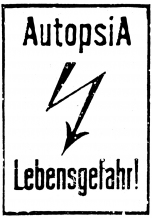| Umělec 2003/1 >> Vietcong versus Dodge Ball | Просмотр всех номеров | ||||||||||||
|
|||||||||||||
Vietcong versus Dodge BallUmělec 2003/101.01.2003 Jiří Ptáček | q & a | en cs |
|||||||||||||
|
"The Brno region advance design firm Pterodon has been active since 1998. But the groundwork was laid by Jarek Kolář and Petr Vlček earlier, in 1993-1994, when they created the adventure game The Secret of Donkey Island, one of the very first Czech games. It was distributed exclusively by mail, delivered in simple plastic bags. It is certainly one of the precursors of more advanced works in Czech game prehistory. Pterodon worked for a number of years for its German customers, then contacted an active Czech team known as Illusion Softworks, which is most famous for its production MAFIA. Pterodon has gained worldwide acclaim with its action series Flying Heroes, and then this year with its latest project, Vietcong.
Vietcong is at first glance the worst of what a moralistic culture might be able to imagine: an action shooting game in the Vietnamese jungle. On the other hand, the game implies a number of phenomena of global culture, such as new limits of the perception of reality, derived from film culture or the ambivalent character of postmodern ethics. Graphic artist Michal Mariánek became its designer. He was able to meet the high expectations associated with a first-class action drama, and was in addition able to cross the line into artistic endeavor in the business in a natural, non-threatening way. Mariánek, under the alias marisha, and programmer Ivo Novák (Solitude) sat down for an interview on ISQ. Very often I meet with the romantic notion that behind the dramatic growth in technological progress are unyielding individuals — obsessed programmers. Or is it that every company has its own people, and that technology can come into being on its own spontaneously, by itself? Is it that way, or are the institutions, which produce the necessary software and then sell it controlling the situation? Could I, after I bought the right programs, create games at or near your level? Solitude: That one would take a while, so… There are companies which specialize in the production of engines, which are then sold to other companies that don’t have the means to write their own. Then (the first) want a percentage of sales revenues or even more. For even more money, you can even sometimes get the production codes. Engine is a pretty broad term; it can include the physical model, an animation system, a sound system, a graphic system (rendering), a system for network communication… You can buy the parts of some engines, get only the ones you need, so the price is lower. So you, a person who isn’t even up with the latest technology, can produce your own game that could be used. As far as our firm goes, we use our own engines, so we can dream and write everything we want up. So you’re completely free. Still, you make games that are, any way you look at them, in the action-shooting genre. Why do you make them, when you could easily buy or copy them? marisha: The biggest projects, logically, cost the most. The choice of themes, accordingly, is therefore influenced by the strongest target groups, or simply put, who is going to be our potential customers. Solitude: And, as I said before, if you buy something, it costs enough money, and at the same time it really is limiting. This way we can put whatever we want in the game, and we don’t have to wait for someone to finance the operation. And the second thing, we have to wallow in our own glory. And finally the third: If a company writes a good engine, it can start selling it… If, that is, you wait on the sale for a while. Then the buyer can’t be your competition… Solitude: We personally haven’t ever sold one. And that borders on firm trade policy, so I probably shouldn’t get into it… The question could be formulated more generally, like: When a firm sells an engine, it does wait a while, so the games are written in it… and so on. When a company does sell an engine, how does it work? Solitude: Well, it tries to make its engine the best. There are already quite a few engines on the market, and they’re mostly high-quality. If you want to make it, you have to work on your engine, react to the customer’s needs, modify, improve, look into what kind of new hardware is out on the market and implement support as fast as possible… Today the idea of the player actively becoming involved in the game is more and more popular. A while back you told me about a group, which was actually able to force a change in the laws governing games. A kind of virtual coup. marisha: Yeah, that really happened. But for simplification I would separate FPS games into two groups, even if that’s not completely exact. The philosophy of the first group is to create a complex world with certain rules, and let the game player deal with the rules the way he wants to. In the other group are games whose story is pretty well given in advance, exactly designed by the author. The principle of playability of these games is found in the fact that there are certain obstacles, which pop up in sequence, and these are decided exactly by the author. Gamemakers give their customers the chance to enter the games very often. Players can for example, with the help of simple editors, make their own game fields, which they can then post on the Internet. This fact supports the creation of communities, which keep the game going long after it has been released. The first group is kept going primarily on the basis of a group of players playing on the Internet. Communities form, and they become so popular and so important that they end up, for example, subsequently modifying the rules of the game. The second group is based more on one player, who has the possibility to interactively make it through a prepared game. The main innovation of the Vietcong game is interaction of the players and obstacles with the terrain. The game’s conditions are based on objects encountered with unified proportions. Then, there’s artificial intelligence and animation of those characters. The result is that the players encounter realistic obstacles in the field. They protect themselves, jump over certain logs or other obstacles, and that gives the shootouts a great atmosphere. This feature lends a real natural feeling to the jungle, custom made. You say realistically, but we’re not getting any closer to actual physical experience. We’re still in front of the computer screen, controlling virtual bodies with our hands. And there’s more often the chance to see the big picture, an overview, and that sort of thing? It has always bothered me that you can pause the game. It seems to me more like an interactive DVD than a reality game. marisha: It’s all connected to the evolution of the language of computer games. It’s like 100-year-old dialogue of old films, which came from the theater. And then when there were bigger details given in the film, the audience thought that it was imperfection, a mistake, because the character wasn’t seen fully on the screen. Today everyone knows what that basic way of expression is all about. It’s an unwritten agreement between author and spectator. In the old games, people experienced great adventure with characters who were more like character icons. They only functioned symbolically. With the development of technology, as we get closer to reality, the user’s senses are taken into account and used in more developed ways. And as the importance of computer games increases, we’ll come closer to permeation: Game authors will go for prepared scenarios somewhat like film quotations. It’s mostly about Ingame cutscenes or all possible rendered animation. Although their production takes place in a completely virtual environment, to make the action look live and convincing, their authors have to simulate the imperfection of film. Like, for example, inexact, unpredictable appearing and disappearing obstacles, things going in and out of focus, and so on. And the opposite: the latest film trends use the experiences gathered from computer games. Like refuting the existence of a cameraman. One advanced feature of Matrix is movement in the space of stopped time. That was used in games first? marisha: Of course that’s used in some tactical games. But the important thing is that it is at least possible in the game. I’m still interested in why games aren’t created which are able to mimic the real disposition of a person. For example, weak physical condition or the natural probability that I die. It might sound like a paradox, but the danger that I might die with the first bullet, or lie burning in the bushes, I would probably like. marisha: That’s one of the principles of playability. The enemy’s intelligence has to be based on more difficult spatial orientation. It has to be made so as to “keep the player in the game.” Most of the time you can choose your own level of difficulty. A while back they were predicting virtual helmets, but with time they backed off from that because of the ordinary aspects of conventional screens. People are used to the limits or area where the action takes place. I get it, I’ll have to try it. Now I’ll ask about something else: Shortly after your game hit the market, a competitor’s game came out with the same theme. Was that some type of industry spying? marisha: We get asked that a lot. It should be said that the Vietnam War has been used as topic for games a number of times in the past. Then, though, there weren’t so many expressive media and it wasn’t such a big business. In the new era of games, authors of war games usually went for World War II, where the issue of good and evil is clearly defined. Or they used other past wars. I think that it is the right time to do a Vietnam game, and Vietcong has only accelerated the process. And clearly someone copied us, but that is completely normal these days. One Vietnam game even came out before ours. It was a budget game, totally stupid, but they made it in three months. So do we now know who was on the side of good in Vietnam? marisha: Vietcong tries to avoid those questions, and rather tries to bring the atmosphere (to the game). Those questions do, however, come up on the Internet from time to time, and they may help marketing… The script of the game is of course a reflection of the real action that took place in Vietnam. The inquisitive player can read an encyclopedia of weapons and technology, can learn a few words of Vietnamese or even listen to the radio of that time. On the other hand it looks like you would like to do it for more educational reasons. marisha: I would answer in this way: Our Vietnamese colleagues were really looking forward to the game … The things I was talking about, they’re a bonus. They’re not about playability or the attempt to treat the topic more precisely. The situation is changing. We’re no longer limited to actively using static systems, but rather we can make the activity more dynamic. It’s no longer like a ride on a toboggan, but like seeing the way it was actually built. The concrete inner needs of the game can be integrated into the structure of the game. What about specific rules for women? Do they exist? Or I’m interested in whether, besides the innovative revival, there is a need for retro, in other words limits on interactivity or graphics. Artists and advertisers have been using these strategies for years. marisha: Retro will always have its place in the game industry thanks to the demand to get back to the roots of game-playing. It’s logical. Take, for example, that kind of antique computer game where you knock a little ball around with a segment-like tennis racket. That’s just playing, there’s nothing important about it. Games certainly create an atmosphere, tell a story, but the nucleus of the game is still in the basic game principles. You can shoot from Vietnam or from Mars, but the foundation is classical, old-style killing… Retro games today can be found mostly in pocket computers and mobile telephones. You yourself use, in the thousands of game environments and faces you’ve set up, a number of simple game software systems. I’ve always had the feeling that you base your games on some kind of retro feeling or technological retardation. What do you think? marisha: In my own art I often touch on the phenomenon of games. In this work it was usually important that the software for creating head models was freeware, freely available on the Internet. It is, obviously, evidently just the imperfection of those models. It was then combined with propagating screenshots of some different computer game. The spectator can see this type of work in two ways. Either as some kind of hacking or more simply the possibility of creating some type of parallel virtual personality. And one more intervention to the game has been successfully introduced. In Vietcong, the good guys, the heroes, are played by Brno artists. marisha: Yeah, the cast of characters of American soldiers in Vietcong is mostly made up of Czech graphic artists. Who else could have a face, which looks so exhausted. It’s enough to look at Václav Stratil in the role of Captain Rosenfield. It doesn’t occur to me that it could be some type of allegory, no, but still something has been reached: Conceptual painter Petr Brožka, completely disguised and armed, is all over the billboards which line Czech highways. That has certainly never been achieved, not to that degree. marisha: Petr Brožka likes to hitchhike when he goes somewhere. And so when he stands under a billboard for Vietcong, with his murderous glare and machine gun being conveyed to all who drive by, well, that has got to increase his chances for a successful hitchhike. www.vietcong-game.com yvo@zbl.cz marianek@pterodon.cz "
01.01.2003
Рекомендуемые статьи
|
|||||||||||||
|
04.02.2020 10:17
Letošní 50. ročník Art Basel přilákal celkem 93 000 návštěvníků a sběratelů z 80 zemí světa. 290 prémiových galerií představilo umělecká díla od počátku 20. století až po současnost. Hlavní sektor přehlídky, tradičně v prvním patře výstavního prostoru, představil 232 předních galerií z celého světa nabízející umění nejvyšší kvality. Veletrh ukázal vzestupný trend prodeje prostřednictvím galerií jak soukromým sbírkám, tak i institucím. Kromě hlavního veletrhu stály za návštěvu i ty přidružené: Volta, Liste a Photo Basel, k tomu doprovodné programy a výstavy v místních institucích, které kvalitou daleko přesahují hranice města tj. Kunsthalle Basel, Kunstmuseum, Tinguely muzeum nebo Fondation Beyeler.
|


































 We Are Rising National Gallery For You! Go to Kyjov by Krásná Lípa no.37.
We Are Rising National Gallery For You! Go to Kyjov by Krásná Lípa no.37.
Комментарии
Статья не была прокомментированаДобавить новый комментарий